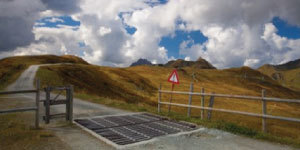Surface Use and Damage Issues
When attempting to settle surface use and damage issues, have you ever had to decide which of these options would be best for your company in the short and long run?
- Relying on the right of ingress and egress as set out in the oil and gas lease
- Acquiring an easement for such purposes?
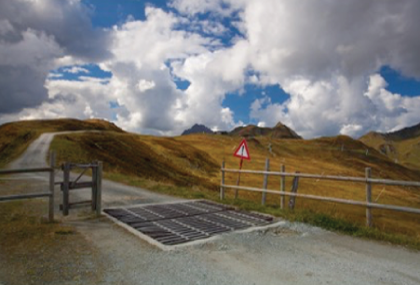
Ingress and Egress vs Easement
What’s the difference? Isn’t the right of ingress and egress an easement?
There are many reasons to obtain a specific easement for an existing road rather than just relying on the right of ingress and egress language in the oil and gas lease. Why?
I recently had an encounter with a land trust in Colorado where it became clear that the use of existing roads, without an easement agreement, was opening the door for problems. The land trust refused to grant access into the drillsite unless my client built his own road under very strict guidelines. Because it was an exploratory well, building a long and expensive road just get to the well drillsite did not make sense. Could we have forced the issue? In this case, maybe – the land trust did not control the minerals.
After much negotiation, the parties agreed to a temporary easement on the existing road with a 50’ workspace on either side. There was also an understanding that upon completion of the commercial well, the temporary easement would be converted into a permanent easement for an agreed amount.
In addition, the decision was made to have an easement granted along the culvert beside the road to lay pipelines.
Understanding the difference between an easement vs. ingress and egress is an essential first step in understanding surface use issues for landmen, right-of-way agents, oil and gas companies, pipeline companies, and any other entity that may need access to land.
An easement is an agreed-upon use of land between the land owner and a third party. This can include access to natural resources such as water on the land, construction of necessary utilities or pipelines and their maintenance. There are two basic types of easements - in gross and appurtenant.
In Gross Easement: Typically held by a specific individual or entity, an in gross easement allows use of property without the benefits of ownership. It’s important to identify all easements prior to starting a project.
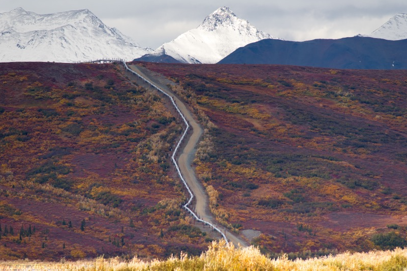
Appurtenant Easement
Often issued for the benefit of adjoining lands, an appurtenant easement automatically transfers when a property is sold. If a property’s deed includes an appurtenant easement, it’s important to be aware of that easement's purpose.
Many people have asked what is the difference between a right-of-way and an easement. Simply put, an easement is an agreement which grants a land right and a right-of-way is the physical land area upon which the granted right is located. This includes roadways to a drillsite, electric transmission lines, telephone lines, pipelines, etc.
Question: If your oil company has an easement which allows access to its production facility, do they have the right to assign this passage to a third party, such as a tank truck? Generally, the answer is yes.
Remember though, an easement agreement grants a right for a particular use, e.g. accessing a drill-site and/or a production facility. Unless the easement excludes anyone but the Grantee, the authority to use the easement is extended to anyone who uses it by necessity for the purpose stated in the agreement.
In most cases, other uses of an existing right-of-way requires either an amended agreement or a completely new agreement.

One of the negatives for the landowner in an easement agreement is that there can be surface use restrictions that limit their use of the property.
An oil & gas lease which grants the right of ingress and egress for the purposes stated within the lease may not be enough to satisfy an owner with significant operations on his land. The easement for those purposes may very well restrict the company’s use of the property in many ways. For example, the easement may limit access to the facilities to certain time periods during the year so as not to interfere with the harvesting of crops or hunting rights.
What if the landowner grants you the right to use an existing farm road to get to and from a drill-site? That’s great, but don’t fail to consider the possibility of needing additional work space on either side of the road, which allows room for vehicles traveling in the opposite direction.
When an easement is granted for some purpose that requires construction of facilities on the land, the agreement must take into account the ongoing operation and maintenance of that facility.
It must also account for additional temporary work space for any construction or maintenance periods. These easements can include demands to regularly clear, trim and remove vegetation and trees, including any trees along the boundary of the right-of-way which have been damaged by weather and could fall onto the right-of-way.
Careful attention to this issue is needed when drafting an easement agreement, especially if your location is remote or way off the main road.
IMPORTANT NOTE
Be sure to put specific common use language in the easement agreement. This will set forth parameters of surface use rights and responsibilities for both parties.
There may be some occasions when a landowner expects you to buy the property you need access to rather than simply acquiring an easement.
The purpose for the easement generally does not require ownership of the land and companies typically do not want to be in the real estate business, so to speak. However, diminishing the use and/or value of a property may demand that the company compensate the owner through the purchase of the land.
In such as case, you need to be aware of dealing with land trusts. They can make it difficult, if not impossible, to actually buy the land where the surface owner has a contractual relationship with them.
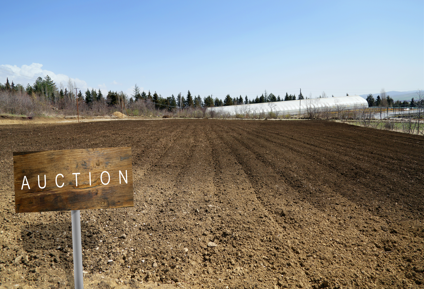
What if the property is auctioned off at a Tax Sale for failure to pay back taxes and there is no right-of-way/easement agreement in place?
- Can the new owner refuse you access on any existing roads across the property, your drill-site and the production facility?
- Can the new owner demand that you dig up any buried lines?
- Is the new landowner subject to compliance with state statutes but has the right to collect new surface damage and use settlements?
- Does the new owner have the right to demand a new right-of-way/easement agreement and payments?
Since the use of land for oil and gas purposes has an inherit subservient relationship with the development of minerals, the worst case may be that new surface damage and use agreements along with new easement agreements may have to be signed and compensation paid to the new owner.
I think it is vital for you to know what I call the “Life of a Well” and/or “Life of a Right-of-Way/Easement” and what that means to the landowner. If you can explain this to the landowner it makes for much easier negotiations.
Most landowners work hard to keep their land productive and looking the way they want it. They generally will not like what oil companies can do to their landscape or conservation value. Therefore, sadly, many land owners take the stand of “Not On My Land” only to find out the hard and expensive way that they may have been able, at best, only to delay the inevitable - a well being drilled on their land.
But just know that next to the oil and gas lease, the surface use and damage agreement is one of the most important, complex and difficult agreements to create in the oil and gas business and right-of-way industry.
The relationship between the landowner and the oil company or pipeline company is generally the most adversarial one in the industry.
It truly is like the “Hatfields and McCoys”.
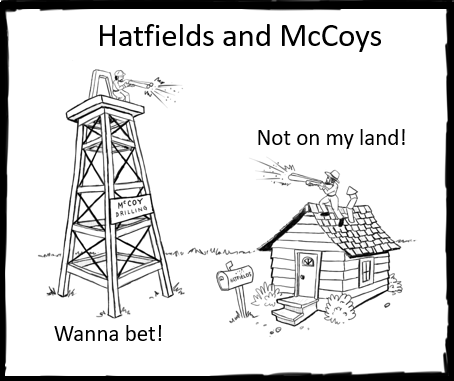
One issue to remember when creating a right-of-way/easement agreement is the Accommodation Doctrine/Reasonable Necessity Doctrine.
The issue of surface owners attempting to stop drilling activities started in the early 1970’s. The Accommodation Doctrine simply states that the mineral owner and Lessee must accommodate the surface owner’s “existing use” of the land. But the Doctrine also allows the mineral owner to move forward with drilling operations on “empty land” even if the action impedes the surface owner’s claimed plan for future development (unless such plan has already been filed with the planning commission).
Again, a good negotiator (landman or right-of-way agent) who is trying to settle land use issues should know to ask questions regarding current and future plans for the use of the surface, despite language in the oil and gas lease, prior to discussing any settlement issues.
Understanding these issues thoroughly will help prevent you from being ‘bullied’ into thinking that the law will not allow you to use the land as you want, when actually the law may not prevent it at all.
Another good question to ask the surface owner is whether their land is part of the Conservation Reserve Program (CRP). The landowner may be expected to reimburse the government for payments he received because your activities on the surface violates his CRP agreement.
The landman should also know that the surface owners would have to meet a rather high burden of proof that a Lessee’s activity would be a major hindrance to existing surface uses (called the ‘reasonably necessary’ doctrine).
Again, in settling surface use and damage issues, ask questions regarding current surface use operations, despite language in the oil and gas lease.
The ultimate conflict to be resolved in most surface use and damage litigation deals with whether or not the mineral owner's and Lessee’s use of the surface is reasonable.
Reasonable could mean necessary to successfully honor the terms, covenants, and conditions of the oil and gas lease and to successfully operate the wells. These types of issues need to be researched prior to leasing minerals. There’s only so much of the land that may be considered ‘reasonably necessary’ to operations.
In addition, the use of the surface must be done in a non-negligent manner with due regard for the surface estate and conservation values.
Just as the mineral owner has the full right to explore for the oil and gas under the surface, the surface owner has the right of full enjoyment of the land (including scenic enjoyment).
This issue should raise caution and awareness for the lease agent, landman or right-of-way agent handling the negotiations. If handled hastily and poorly, there could be grounds for court proceedings and undue delays of the proposed operations.
In addition, when considering surface use issues, it’s important to realize that some matters are ‘preventive in nature’ and do not have anything to do with actual damage to surface. These include:
- Dust control during drilling operations or road construction.
- Best available technology for use on the production facility, such as natural gas flares.
- The right for the surface owner to have a gas pipeline from the well to hook-up natural gas to his house (free use of the natural gas is known as ‘house-gas’).
- How close to any structure can or should the oil company drill, despite the language in the lease.
- Designation of hours, days and months of operations.
- Controlling the speed of vehicles and the placement of applicable signs.
- Gate access procedures, including how locks are to be placed on gates and the opening and closing of any gates.
- Protection of trees and other plant life.
- Location of power lines.
- Gas Flares - could be that the surface owner wants the ‘night flame glow’ to be minimized as much as possible.
- What safety signs should be placed in and around the drilling location and production facility.
- Spill containment and storage procedures around oil tanks and liquid storage and/or providing copies of the company’s spill plans.
- Location of Temporary and Permanent roads and the type of material used to build them, along with their removal in the event they are temporary.
- Maintenance of roads, rights-of-way for electrical lines and buried pipelines, and production locations.
For example: In California you can have several issues that will directly affect the ‘short’ and ‘long’ term outcome of the oil company’s operations. For example, if a road has to be built through an area where ‘oak’ trees will have to be cut down, the state has rules under which the oil company must address the replacement and care of those oak trees (since that is the ‘state tree’).
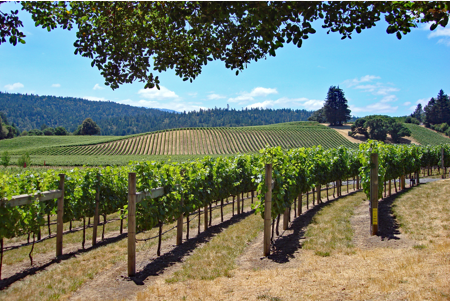
Also, there are many fruit tree groves and other farming issues to consider that an oil company’s operations could impact in the ‘day-to-day’ farming business, such as replanting and expansion issues (grape vines and other fruit trees), water usage, choosing locations where all of the oil company’s operations will least impact the farming, fire control (onsite water supply), insurance, electrical power line placement, burying pipelines, having safety signs in multiple languages on all sites (including on tanks and production facility equipment), thorough spill plans and other safety measures and procedures, and the onsite storing of chemicals needed in the oil company’s operations.
Here are some examples of issues regarding buildings and roads that the surface owner may request. Again, the Lessee has the reasonable use of the land for the production and development of the minerals:
- The Lessee is prohibited from constructing more than one road to each location and is required to restrict all travel to the wells to a single road. There may be some requirements as to what type of road material that the surface owner requires in order to prevent further damage to the land.
- The Lessee must consult with the surface owner prior to creating or widening any roads, and the Lessee has no right to use any existing roads on the premises without the prior written consent of the surface owner.
- The Lessee is responsible for maintaining all roads used in Lessee’s operations and may be responsible for removing the roads and restoring the land soon after operations are completed and/or abandoned.
Conclusions
Just know, any use of the land, whether with the right of ingress and egress or a right-of-way/easement, you have to respect the land and its conservation value (wildlife and scenic). In addition, in an attempt to make the use of surface less intrusive, some states have recognized the need to protect the agricultural industry and have provided incentives for fair dealings by enacting the ‘Surface Damage Compensation Act’ for their state. A savvy attorney determine what each state’s statutes in this regard are.
Also, the oil company should use extra caution when planning a drill-site and a production facility along with roads so as to not create erosion, loss of livestock, loss of wildlife habitat, aquifer pollution, ground pollution, air pollution, and fire hazards. They must also address right-of-way and facility maintenance, safety issues (including appropriate signage), surface water usage, and water run-off issues.

